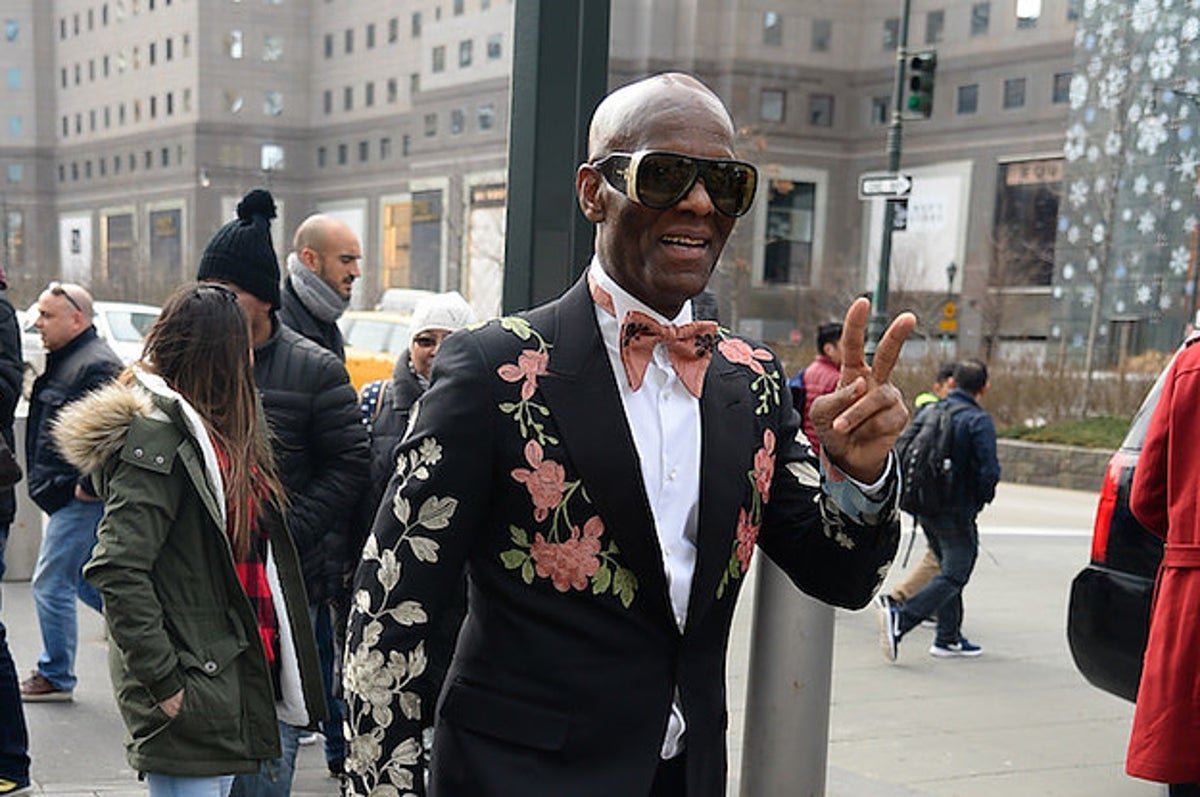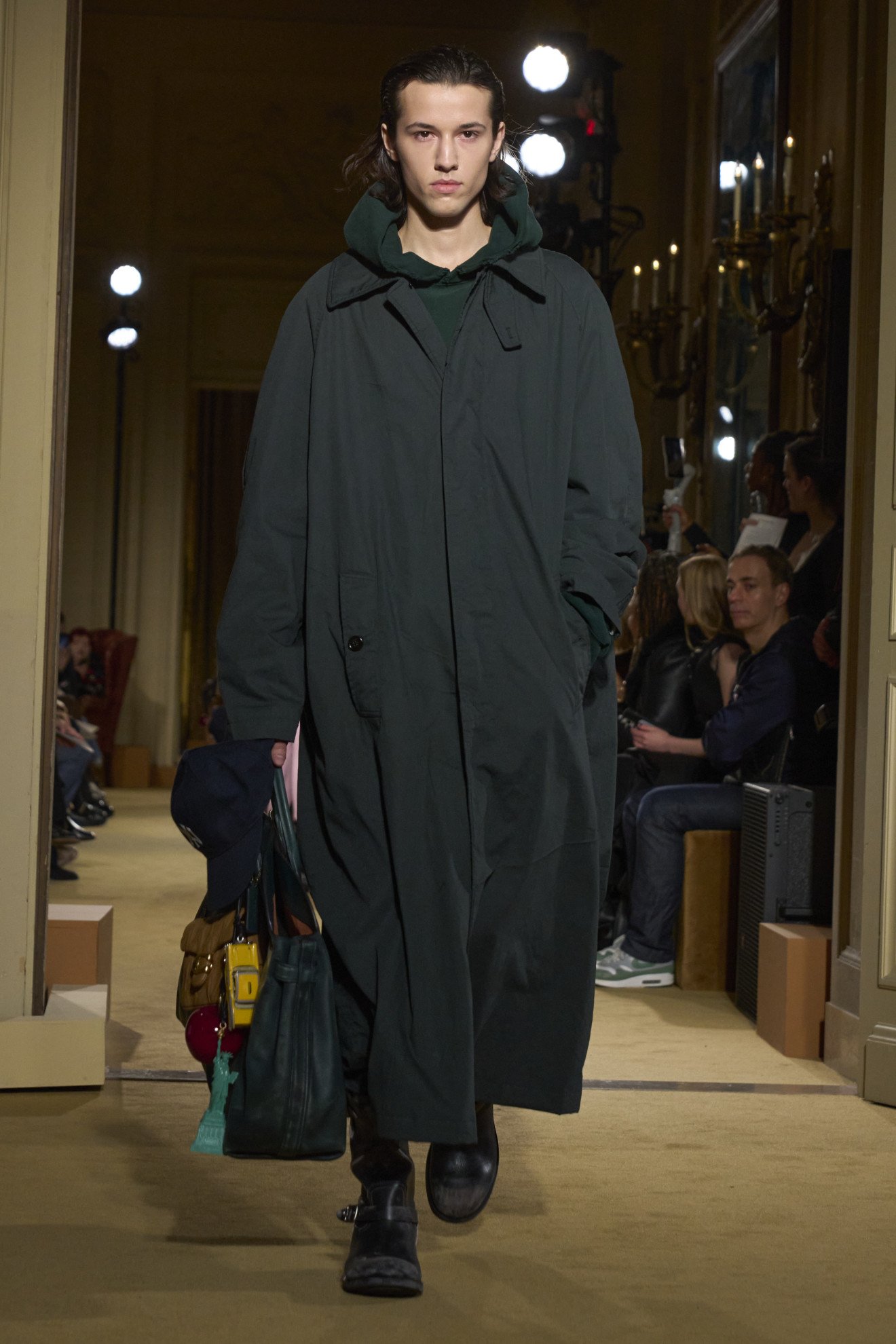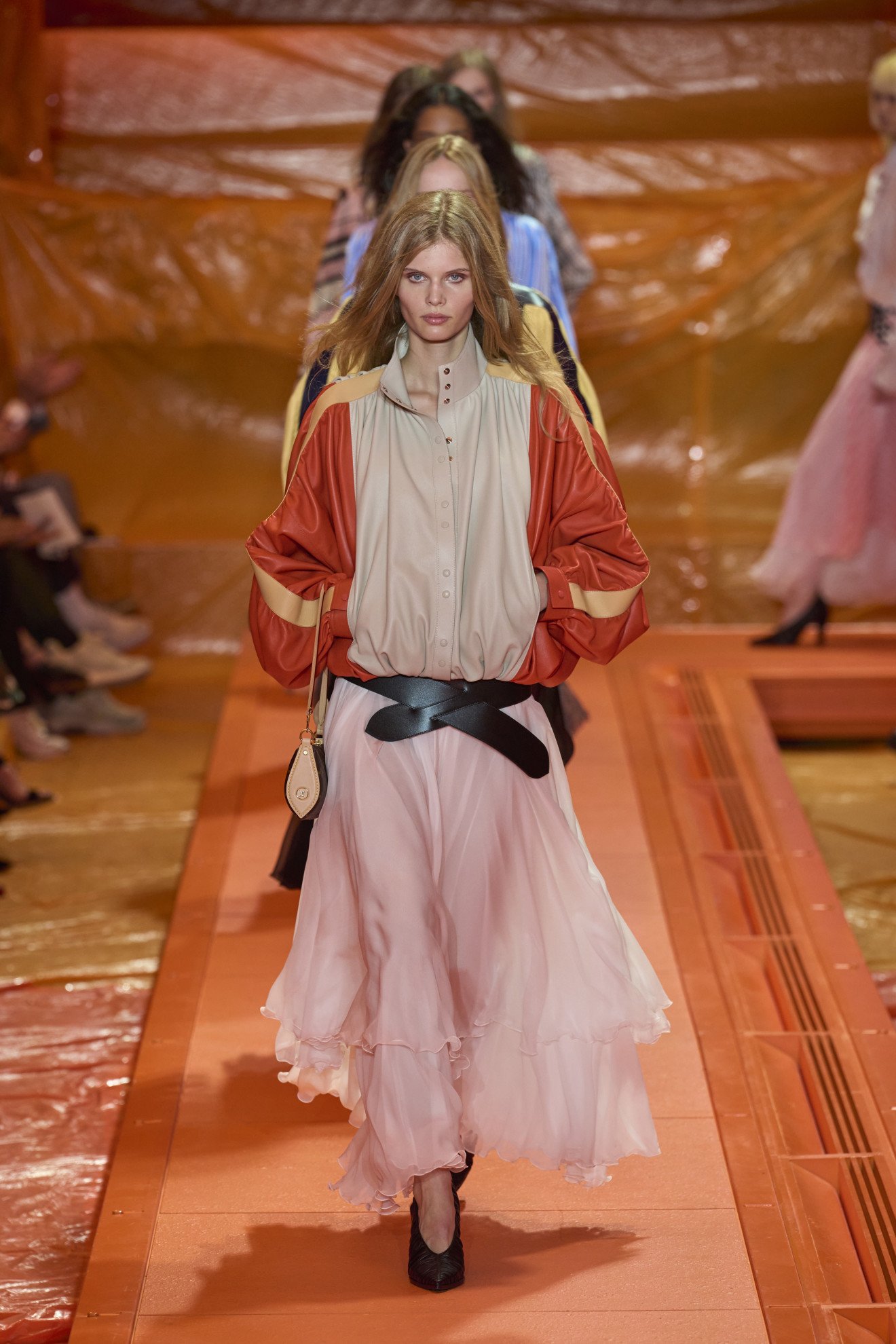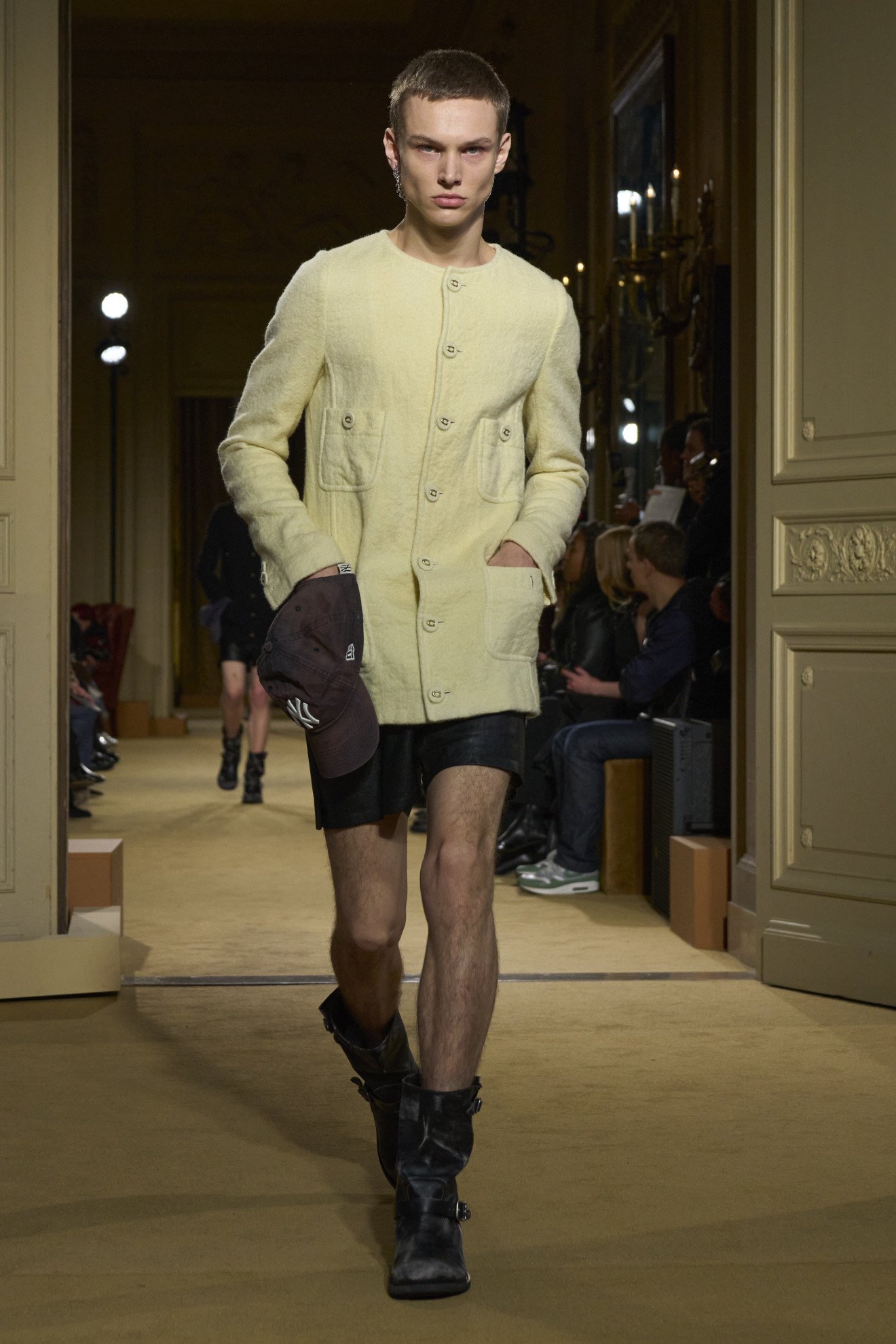The Role of Spiritual Insights in Creating a Meaningful Fashion Narrative

Introduction to Spiritual Insights in Fashion
In fashion, weaving spiritual insights into a narrative isn't just about adding depth; it's about creating connections that resonate on a personal level. It's understanding that clothes are not just fabric stitched together but a canvas for self-expression and identity. When we talk about spiritual insights in fashion, we're diving into how designers draw on their beliefs, cultures, and personal journeys to infuse their collections with meanings that go beyond the visual. It's about the stories that garments tell and how they relate to us on a deeper level. This approach marries the visual aesthetics of fashion with the intangible, making each piece not just an item of clothing, but a token of personal and collective stories. In this context, spiritual insights become a powerful tool for designers to create more than just trends but narratives that reflect broader themes of connection, reflection, and transformation. So, as we peel back the layers of fabric, we find threads of spirituality interwoven, transforming the way we perceive fashion from merely functional to profoundly meaningful.
The Historical Connection Between Spirituality and Fashion
Long before fashion became a billion-dollar industry, it was deeply intertwined with spirituality. You see, ancient civilizations didn't just throw on clothes for warmth or protection; what they wore was loaded with spiritual significance. For example, in Egypt, colors in clothing weren't just about looking good. They believed certain colors could offer protection against evil or attract positive energy. Fast forward to the Middle Ages, and monks wore simple robes as a sign of humility and devotion. This wasn't fashion for the sake of fashion. It was a spiritual uniform, communicating their values without saying a word. Even today, many traditional outfits worn during religious ceremonies, think of saris during Hindu weddings or white dresses at Christian baptisms, are not just about adhering to custom. They symbolize purity, joy, and a connection to something greater than ourselves. So, when you look at the history of fashion, it's clear. Spirituality and fashion are old friends. They've been telling stories together, using fabric and design to express beliefs and connect us to something bigger, for centuries.
Defining Spiritual Insights in the Context of Fashion
When we talk about merging spirituality with fashion, it’s all about connecting deeper meanings and values to the clothes we wear and the stories they tell. Spiritual insights in fashion are not about trends or what's on the runway. Instead, it's diving deep into personal beliefs, cultural heritage, and individual stories, making each piece of clothing more than just fabric. It’s about wearing something that feels like an extension of the self, something that symbolizes more than just style but embodies values, traditions, and personal journeys. For many, this could mean choosing clothes that are ethically made, supporting sustainable fashion, or wearing designs that reflect their spiritual beliefs or cultural background. In essence, it's weaving personal narratives into the fabric of our clothing, making fashion a tool for expressing the deeper aspects of our identity.
How Spiritual Insights Influence Fashion Designers
Fashion designers often turn to spiritual insights as a deep well of inspiration, crafting clothes that speak more than just style—they whisper stories, beliefs, and a deeper connection to the world around us. When a designer taps into spirituality, they're not just picking colors or fabrics at random. They're engaging in a conversation with history, culture, and the essence of humanity. For instance, a pattern might not just be a pattern; it can represent a journey, an ancestral story, or a prayer. The use of specific symbols and colors can convey messages of peace, strength, or unity without saying a word. This spiritual connection doesn't just enrich the design; it creates a bond between the wearer and the garment, turning a simple piece of clothing into a talisman of sorts. It’s this unique blend of fashion and spirituality that carves a niche, allowing wearers to express not just their style, but their beliefs, their struggles, and their dreams. So next time you spot a piece that resonates with you on a level beyond aesthetics, remember, you're glimpsing into the soul of the designer and the spiritual journey that led to its creation.
Incorporating Spiritual Symbols into Fashion Items
Fashion isn't just about what you wear; it's a way to express your inner self and beliefs. When it comes to weaving spiritual symbols into fashion items, it's all about creating pieces that sing to the soul. Let's break it down, you might think of symbols like the cross, the Om, or even the tree of life. These aren't just designs; they carry deep meanings and histories. Now, if you're aiming to infuse your wardrobe with a bit of spirit, start simple. Incorporate symbols that resonate with your beliefs or the energy you want to attract. Think about wearing a piece of jewelry with a symbol that holds personal significance or choosing a t-shirt emblazoned with a powerful icon. Designers, take note. The key is balance. You want your creations to speak volumes without saying a word. Mix symbols with modern styles to craft pieces that are both timeless and meaningful. Remember, the intention is the heart of the game. When a designer embeds a symbol with care and thought, that item does more than just look good - it carries a vibe, a connection. Whether it's through accessories, prints, or the very fabric of the garment, integrating spiritual symbols into fashion items is a powerful way to communicate identity, beliefs, and belonging.
Case Studies: Fashion Brands with a Spiritual Narrative
When we dive into the world of fashion, it's clear that the brands that stand out are often the ones that weave a deeper meaning into their fabric—literally. Let's talk about a few fashion brands that have masterfully incorporated spiritual insights into their narrative, making for a compelling and meaningful story.
First up, we've got Stella McCartney. This brand is a pioneer in sustainability and ethical fashion, drawing heavily on McCartney's own vegetarian principles. It's not just about avoiding leather and fur; it's a holistic approach that respects the earth and all its inhabitants. This spiritual respect for nature has become a cornerstone of the brand's identity, connecting with consumers who share similar values.
Next, consider TOMS Shoes. With their unique selling proposition of "One for One," TOMS has made social responsibility a major part of its brand ethos. For every pair of shoes sold, they donate another to a child in need. This spirit of giving and helping others is deeply woven into the brand's narrative, tapping into the spiritual notion of interconnectedness and compassion for others.
Then, there's Vivienne Westwood, a brand that doesn't shy away from activism. Westwood herself has been a vocal advocate for climate action, integrating this into her brand by focusing on ethical production practices and sustainable materials. The brand channels a punk spirit of rebellion, urging consumers to fight against the status quo for a better world— a spiritual battle against materialism and environmental disregard.
These brands showcase that fashion is not just about aesthetic appeal; it's a powerful medium to express and share deeper spiritual values. By aligning their narratives with a higher purpose—be it environmental protection, social responsibility, or activism—these brands connect on a more meaningful level with their consumers. It's a lesson in not just selling products, but also in selling ideas and ideals that resonate with the human spirit.
The Impact of Spirituality on Consumer Choices in Fashion
Customers today look for more than just style in their clothes; they seek a connection, a story that resonates with their personal beliefs and values. This is where spirituality steps in, shaping purchasing decisions significantly. Brands that weave spiritual insights into their narratives often find a more committed audience. For instance, using symbols like the lotus or colors associated with chakras can turn a simple piece of clothing into a statement of personal growth and self-awareness. It's not just about the product but the values it represents—sustainability, mindfulness, and ethical production echo deeply with spiritually inclined shoppers. Essentially, when fashion houses incorporate these elements into their collections, they're not just selling a garment; they're offering an identity that aligns with the consumers' aspirations towards living a more meaningful life. This bond goes beyond the physical product, creating a loyalty that's based on shared principles and ideals.
Challenges of Authenticity: When Fashion Meets Spirituality
Merging spirituality with fashion sounds cool, right? But it's tricky. When designers take inspiration from spiritual symbols or themes, they walk on thin ice. The main challenge? Making sure it's real—authentic—and not just a fancy, shallow nod to something deep. You've seen it, brands tossing in symbols or prints from various cultures or spiritual practices, aiming to look edgy. Here's the thing, though: if it doesn't come from a place of true respect or understanding, folks notice. It can feel off, maybe even disrespectful. So, when fashion tries to weave in spirituality, the big question is how to do it right. It's not just about looking spiritual; it's about being genuine in how spirituality is represented. This means really getting into the roots, understanding the meaning behind symbols, and ensuring that their use honors their origin. Not easy, but when done right, fashion can offer a powerful, authentic narrative that resonates deeply with people, connecting them with something bigger than the latest trend.
Embracing Diversity: Spiritual Insights from Around the World
When we dive into the fashion world, understanding and embracing diversity becomes crucial, not just in terms of design but also in the spiritual insights that influence these designs. Every culture around the world holds its unique set of beliefs, rituals, and traditions that contribute significantly to its identity. These spiritual perspectives offer a rich tapestry of inspiration that can deeply enrich the fashion narrative, making it more meaningful and connected.
Take, for example, the vibrant colors and patterns found in African textiles, each with its story and symbolism rooted in local traditions and spiritual beliefs. Or consider the meticulous craftsmanship of Japanese kimonos, where every color, pattern, and fold holds a specific meaning, reflecting Shinto and Buddhist influences. Similarly, Native American fashion incorporates symbols and materials that hold sacred significance, telling stories of connection to the earth and the spiritual world.
Embracing these diverse spiritual insights does not just add depth to fashion; it fosters a sense of global unity and respect. It reminds us that behind every piece of clothing, there's a story, a tradition, or a belief that deserves recognition and appreciation. This approach encourages designers and fashion enthusiasts alike to transcend boundaries, to see fashion as a universal language that can bridge cultures and celebrate diversity in its most beautiful form.
In essence, the spiritual insights from around the world act as a beacon, guiding the fashion industry towards more inclusive, respectful, and meaningful creations. They teach us that fashion is not just about the external appearance but about the story, the culture, and the spiritual meaning it embodies. By tapping into this vast reservoir of spiritual wisdom, the fashion narrative can truly flourish, embracing diversity in its most authentic and profound way.
The Future of Spiritual Insights in Fashion Narratives
The future of spiritual insights in fashion is bright and transformative. These insights offer a fresh lens through which we can view fashion — not just as a means of personal expression but as a way to connect with something greater than ourselves. As more designers and brands integrate spiritual elements into their narratives, we'll see fashion that not only looks good but feels meaningful too. This shift towards spiritually imbued fashion is not a fleeting trend. It's about creating clothes that carry a story, connect us to our heritage, and speak to our inner selves. The power of these narratives can change how we view the clothes we wear, making fashion a tool for self-discovery and connection. So, expect to see more collections that aren't just about the latest styles but about fostering a deeper understanding and connection to the world around us. In sum, the future holds a wardrobe that enriches the soul as much as it adorns the body.




